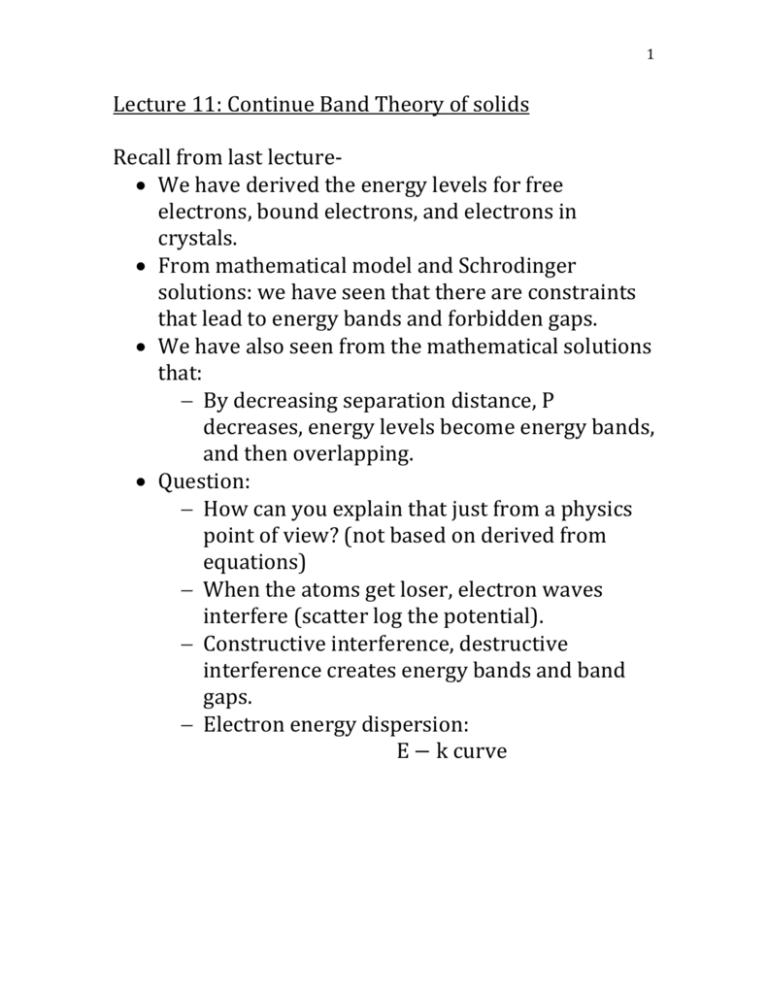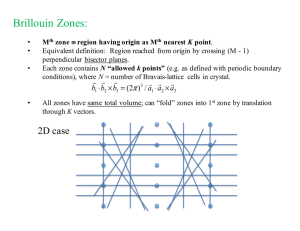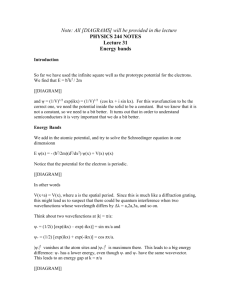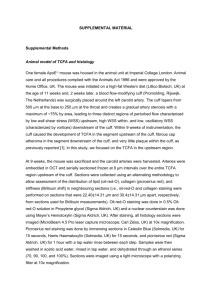Lecture 11: Continue Band Theory of solids
advertisement

1 Lecture 11: Continue Band Theory of solids Recall from last lecture We have derived the energy levels for free electrons, bound electrons, and electrons in crystals. From mathematical model and Schrodinger solutions: we have seen that there are constraints that lead to energy bands and forbidden gaps. We have also seen from the mathematical solutions that: By decreasing separation distance, P decreases, energy levels become energy bands, and then overlapping. Question: How can you explain that just from a physics point of view? (not based on derived from equations) When the atoms get loser, electron waves interfere (scatter log the potential). Constructive interference, destructive interference creates energy bands and band gaps. Electron energy dispersion: E − k curve 2 Now, we are interested in constructing the E-R curve. You will see that we can draw important conclusions about electronic properties of materials from this diagram. Let’s start We know that: E= h2 k2 2m for free electrons k=√ 2m 1⁄ E 2 2 h 3 √ 2m 1⁄ E 2 2 h Here: sin(αa) cos(ka) = P + cos(αa) αa we have free electrons when P → 0 ∴ cos(αa) = cos(ka) But, that is not all cos is a periodic function in 2𝜋. ∴ cos(αa) = cos(ka) = cos(ka + n2π) αa = ka + n2π 𝛼2 = Then, 2𝑚𝐸 ℎ2 𝛼= √2𝑚 ℏ 𝐸 1⁄ 2 2m 1⁄ ka + n2π = E 2a h Divide by a: 4 2π 2m 1⁄ k+n =√ 2 E 2 a h What does this mean? 5 Curve 1 repeats itself in increments of (n=±1, ±2, ±3) 2π a ∙n 6 7 Energies are not continuous at cos(𝑘𝑎) = ±1 ka = nπ n = ±1, ±2, ±3 nπ ⟹k= a at k = nπ , E deviates from the parabolic curve a For most k x values, electrons in crystals behave like free nπ electrons except k close to a 8 π π Look between k = − & : a a 9 Reduced Zone Scheme 2 nd Brillioun Zone 10 Look between k = − 2π 2π & : a a Let’s look to the extended zone scheme again: Energy gaps (band gaps) occur at Brillouin zone boundaries 1D The first Brillouin zone occupies: π π − ≤ k ≤ (Corresponds to n-band) a a The second Brillouin zone occupies: π 2π 2π π − ≤ k ≤ − and ≤k≤ a a a a (Corresponds to m-band) We get bands of allowed electron energies separated by smaller regions of forbidden energies at the Brillouin zone boundaries. We will call these bounds: n, m,… (The valence and conduction bands) Note: we don’t need to plot E versus k for all Brillouin zones? Why? Because of the periodicity, the interesting information is already contained in the first Brillouin zones. 11 Plot free electrons in a reduced zone scheme: 2π 2m 1⁄ √ k+n = E 2 2 a ℏ ℏ2 2π E= (k x + n ) 2m a 2 ℏ 2 n=0 ⇒ E= k x 2m (Parabola at the origin) 2 ℏ 2π 2 𝑛 = −1 ⇒ E = 2m (kx − a ) (Parabola with origin at 2π a ) 12 Free electron bands plotted in the reduced zone scheme. Let’s compare this graph with Fig. (b) above 13









